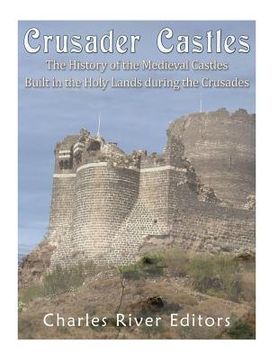Crusader Castles: The History of the Medieval Castles Built in the Holy Lands during the Crusades (en Inglés)
Reseña del libro "Crusader Castles: The History of the Medieval Castles Built in the Holy Lands during the Crusades (en Inglés)"
*Includes pictures *Profiles the various defensive features of castles and the technologies and weapons used by the sides attacking and defending them *Includes online resources and a bibliography for further reading A series of mountain chains frame the Levantine coast, growing in height as they approach modern-day Lebanon. These provided a natural defense along the important coast, and the few passes through these mountain ranges were the focal points of movement and communication. For this reason, these locations were where many crusader castles were erected. Bristling with fortifications, these impressive structures were occupied by orders of knights that came to the Holy Land with the Pope's blessing, and who have gained a most romantic status over history. These Crusaders were called al-Faranj ("Franks") by the Arabs in the Holy Land, reflecting the French origins of many of the knights, even though the knights, soldiers, and pilgrims came to the Holy Land from all over Europe, and in particular from southern Italy, Germany, and England. For the men who built and manned these castles, they were much more than buildings surrounded by stone walls or wooden palisades. They were also more than a headquarters for knights and their armies during battle, or a storehouse for goods in the remoteness of the Levant. These castles were the central focal point for those who held them and those trying to conquer them, and it would not be an exaggeration to claim that castles were the nexus for much activity and conflict within the Holy Lands. At the same time, the castles were filled with the hustle and bustle of activity caused by a wide range of actors even in times of relative peace and stability. Men-at-arms were the soldiers who manned the castle, protected the borders of the Crusader States, and followed the orders of their noble knight lords, but the castles also served as a gathering place for skilled craftsmen such as blacksmiths, potters, stone masons, bakers, carpenters, and the like. Many served as religious centers in their own right, containing at least one chapel of either Christian or Muslim faith. The Muslim efforts to reclaim and rule the Levant were just as important and interesting as those of the Crusaders. Initially led by the atabegs of Aleppo, and later by the renowned Saladin (known also as Salah Ed-Din), various Muslim forces took and retook the Holy City of Jerusalem. The cycle of conflicts between the Crusader states and the Muslim armies was disrupted in 1260 CE when the Mongols, having roved without obstruction across Eurasia, invaded the region with the support of the Armenians and some of the Crusader States. However, they were eventually defeated by the mighty Mamelukes of Egypt, who in turn focused their attention on consolidating their control over the Near East and eradicating the European presence in the region. Finally, in 1302 CE the Mamelukes conquered the last Crusader stronghold at Arwad, leaving one last remaining Crusader state - the Kingdom of Cyprus, which held out until it was invaded by the Ottomans in 1571 CE. Crusader Castles: The History of the Medieval Castles Built in the Holy Lands during the Crusades examines the construction of the castles, daily life inside of them, and the fighting over them during the Crusades. Along with pictures of important people, places, and events, you will learn about Crusader castles like never before.

